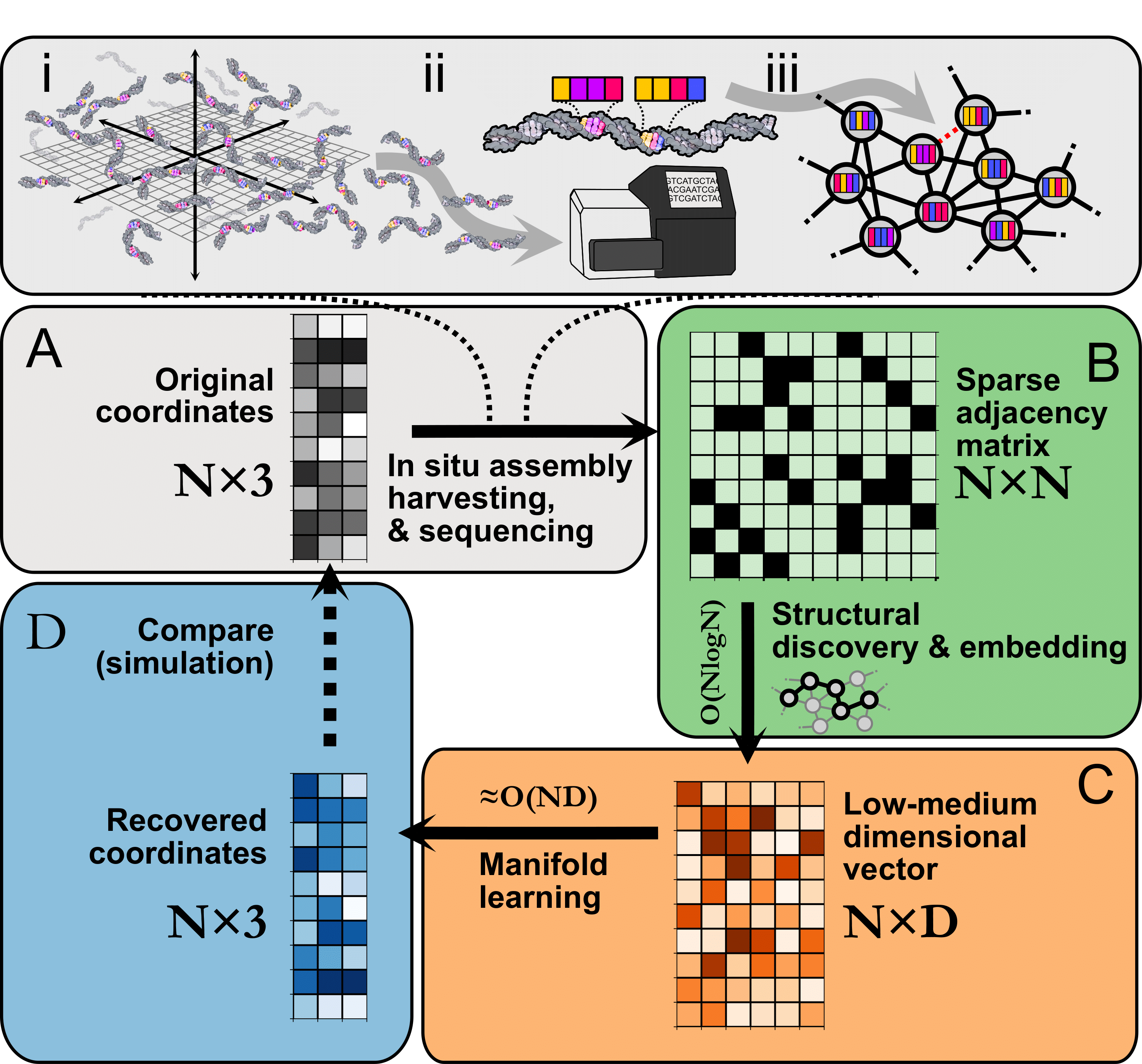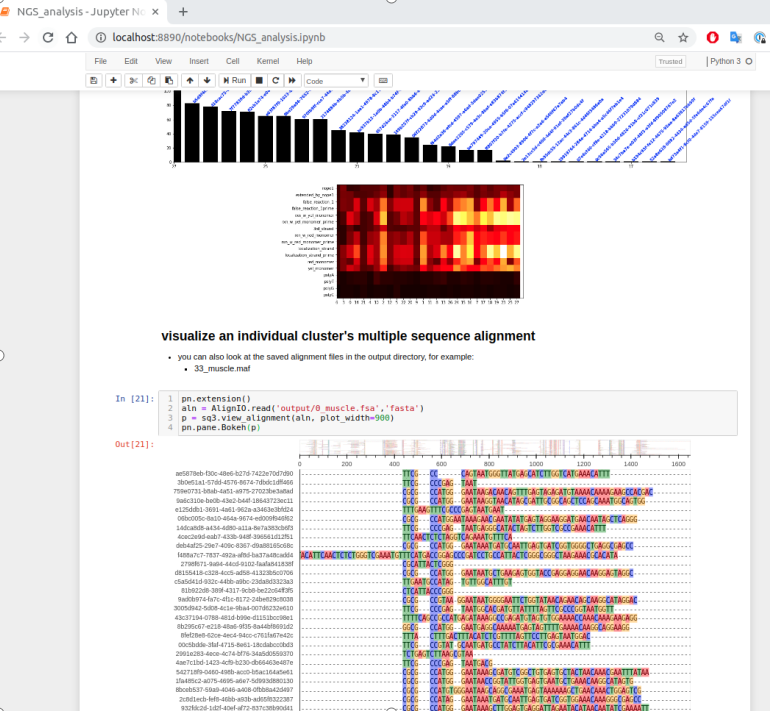Network reconstruction with "STRND" (Spatio-Topological Recovery by Network Discovery)

The STRND algorithm is for reconstructing spatial networks of barcodes, in particular, those that don't have distance information built into the edges or relationships between nodes. Instead, STRND uses random walks to sample the area around each node, placing it in a spatial context relative to other nodes. We discovered this approach to be surprisingly robust for most spatial network reconstruction tasks, even when very little is known about how the network was generated, so long as the path between nodes and their distance are somewhat correlated. Read more about it in our Nanoscale paper:
